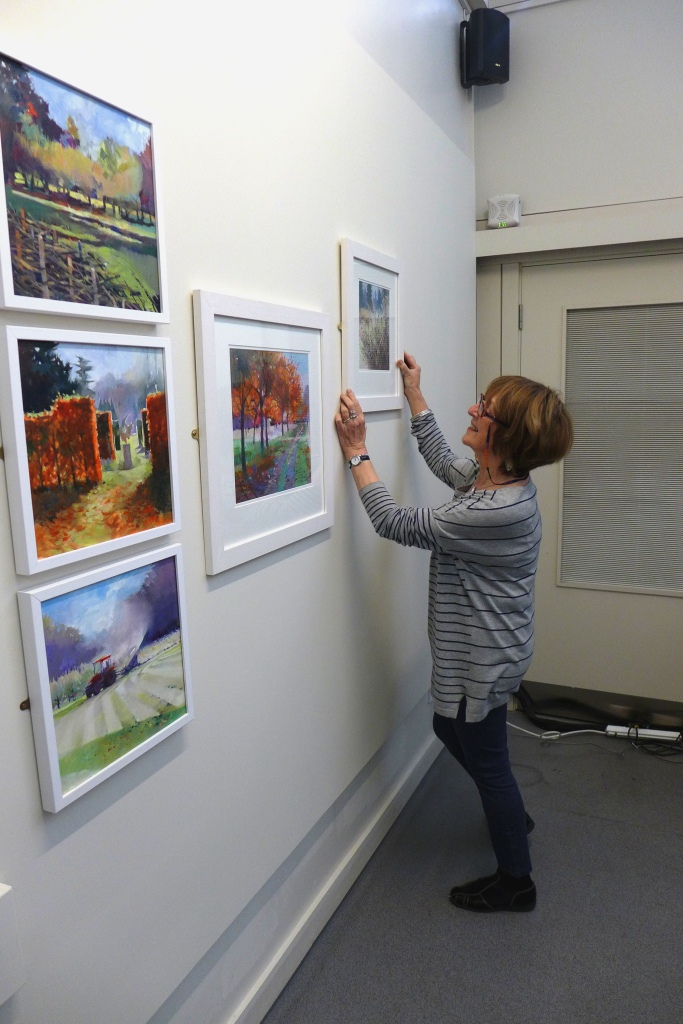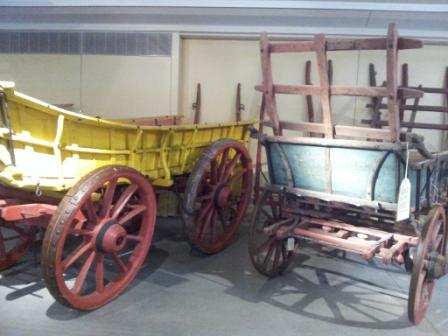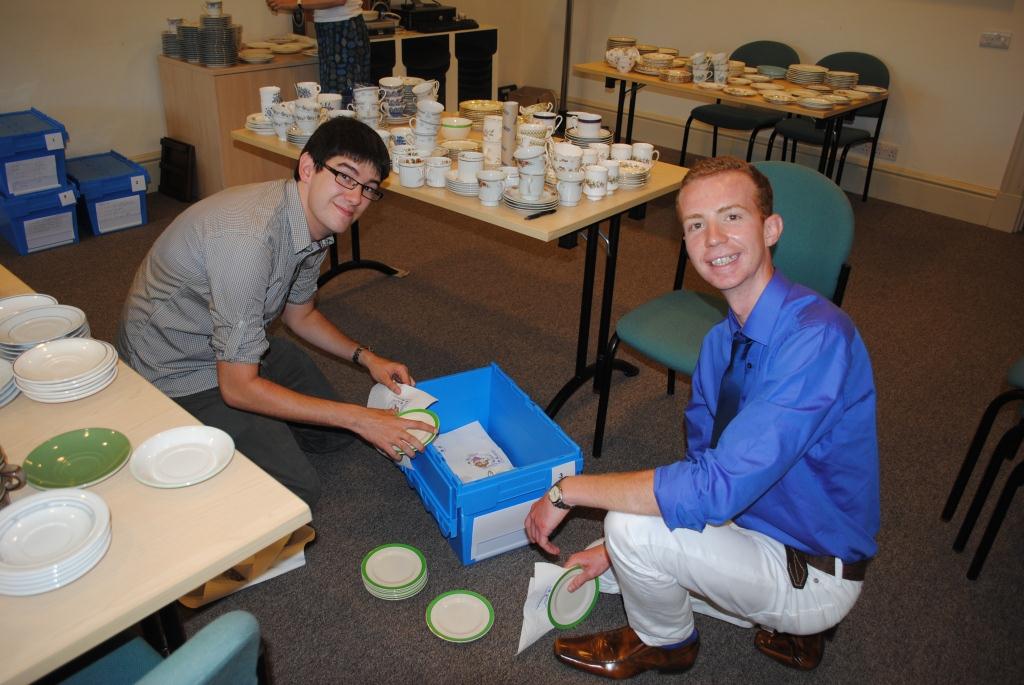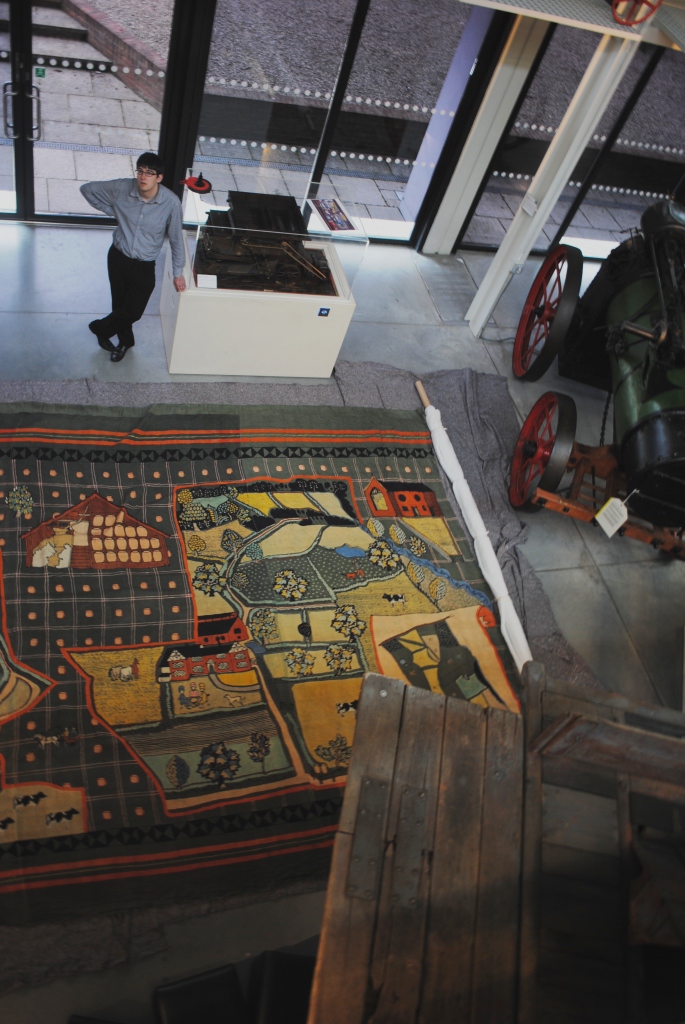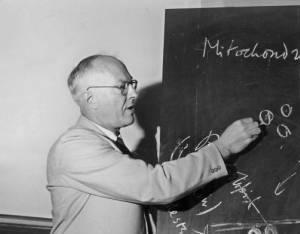Our first guest post is by Jenny Halstead, whose exhibition, An artist’s year in the Harris Garden opened at MERL last week. Jenny is a local artist who spent a year as Artist in Residence at the University of Reading’s beautiful Harris Garden. The resulting exhibition showcases the paintings and sketchbook studies which take us through the seasons, moods and development of the Garden over the duration of a year from 2011. The exhibition at MERL is a wonderful example of collaboration between one of Reading’s best-known local artists, the University and the Museum, and is already attracting people with an interest in Jenny’s work and the Garden, but who may never have thought of visiting MERL before. We are delighted that Jenny has agreed to give us an insight here into how the exhibition evolved…
My year in the Harris Garden, by Jenny Halstead.
The exhibition is up … on the newly painted panelling in the Studio at MERL. Seeing one’s work all together and displayed for the first time is always a surprise.
I had planned the arrangement on paper, and hoped it would all fit as well when on the wall…and it did! I wanted to create the transition and flow of the seasons around the two walls of the room, starting with the process of people planting in ‘Forward Looking’ then into the cool colours of winter – the snow and the frost giving way to the acid greens of spring, followed by the vivid colours of summer, before drifting into the oranges and earth colours of autumn. During my year as Artist in Residence, I’ve recorded the Harris Garden over the changing months, its development and the people who work in it. This I have done by using sketchbook studies rather than photographs (although a camera is useful on occasions for extra reference).
When I draw, I engage with the subject, the eye observes, the brain absorbs and the hand holding the pen translates. The drawing is a thought-process and adding a tonal wash gives me enough information to make finished paintings in the studio later.
Most of these sketches are on a continuous loop playing on a monitor as part of the exhibition. The iPad is text–free and encourages the visitor to flick through the images of paintings and, when tapped, to hear my voice describing either the scene or my reasons for choosing to paint it and choosing the medium to be used. It has been fun planning the exhibition, choosing the selection of paintings and sketches to be used in the book An artist’s year in the Harris Garden (published by Two Rivers Press) and writing the accompanying text, with extra input from other invited contributors.
The year has been a fantastic one and I have so enjoyed all aspects of the project and the process, and hope the visitor enjoys the exhibition as much as the Garden itself. Jenny
For full details of ‘An artist’s year in the Harris Garden’ and related events, including a afternoon sketching workshop in the MERL garden, Jenny’s open studio as part of the Whiteknights Studio Trail, visit the exhibition page on the MERL website. You’ll also be able to meet Jenny at the MERL Village Fete tomorrow, Saturday June 1st…


